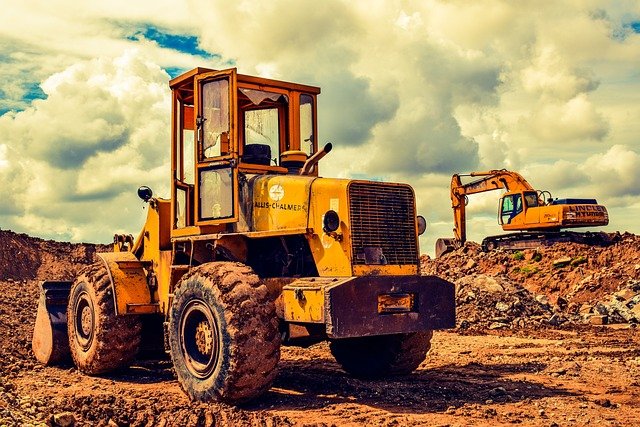Comprehensive Guide To Bank Repossessed Mini Excavators
When construction companies face financial difficulties or equipment leasing agreements fall through, mini excavators often become bank repossessed assets. These machines represent potential value for buyers seeking quality equipment at reduced prices. Understanding the market for bank repossessed mini excavators requires knowledge of how repossession works, what to look for in these machines, and how to evaluate their true worth before making a purchase decision.

What Are Bank Repossessed Mini Excavators
Bank repossessed mini excavators are compact excavation machines that financial institutions have reclaimed from borrowers who defaulted on their loans or lease payments. When contractors, construction companies, or equipment rental businesses can no longer make payments, the lending institution takes possession of the equipment as collateral. These machines are then typically sold through auctions, equipment dealers, or directly by the banks to recover the outstanding loan balance. The repossession process follows specific legal protocols, including proper notification to the borrower and documentation of the default. Once repossessed, these mini excavators enter a secondary market where they’re often sold at prices below traditional retail values.
Pros and Cons of Bank Repossessed Mini Excavators
The primary advantage of purchasing bank repossessed mini excavators is cost savings. These machines typically sell for 20-40% below market value for comparable new equipment, making them attractive options for budget-conscious buyers. Additionally, many repossessed excavators have relatively low operating hours since they may have been repossessed early in their service life. Some financial institutions also perform basic maintenance and inspections before selling.
However, potential disadvantages exist. Repossessed mini excavators often come with limited or no warranties, transferring risk directly to the buyer. Maintenance records may be incomplete or missing entirely, making it difficult to assess the machine’s true condition. There’s also typically no opportunity for test operation before purchase at auctions. Some repossessed equipment may have hidden mechanical problems that previous owners neglected as they approached financial difficulties. Buyers should also be aware that liens or other financial encumbrances might exist on the equipment if the repossession process wasn’t properly executed.
Bank Repossessed Mini Excavators Costs and Pricing
The pricing of bank repossessed mini excavators varies significantly based on several factors. Machine age, accumulated operating hours, overall condition, and brand reputation all impact valuation. Popular brands like Kubota, Caterpillar, and Bobcat typically command higher prices even when repossessed. On average, bank repossessed mini excavators sell for 60-80% of their comparable retail value.
Current market pricing shows significant variations across different models and conditions. Basic 1.5-ton mini excavators in fair condition typically range from $8,000-$15,000 when repossessed, while the same machines might cost $20,000-$30,000 new. Larger 3-5 ton models in good condition generally sell between $18,000-$35,000 as repossessed units, compared to $40,000-$80,000 new.
| Model Size | Average Repossessed Price | Comparable New Price | Typical Savings |
|---|---|---|---|
| 1-2 Ton Mini Excavator | $8,000-$15,000 | $20,000-$30,000 | $12,000-$15,000 |
| 3-4 Ton Mini Excavator | $18,000-$25,000 | $40,000-$60,000 | $22,000-$35,000 |
| 5-6 Ton Mini Excavator | $25,000-$35,000 | $60,000-$80,000 | $35,000-$45,000 |
Prices, rates, or cost estimates mentioned in this article are based on the latest available information but may change over time. Independent research is advised before making financial decisions.
Bank Repossessed Mini Excavators Features and Models
The market for repossessed mini excavators includes diverse makes and models with varying features. Compact mini excavators (1-2 tons) offer excellent maneuverability for tight spaces and residential work, with dig depths typically ranging from 5-8 feet. Mid-size models (3-4 tons) provide enhanced digging capacity (8-12 feet) while maintaining reasonable transportability on standard trailers. Larger mini excavators (5-6 tons) deliver near-full-size excavator capabilities with dig depths up to 15 feet while still qualifying as “mini” equipment.
Common features to evaluate include the hydraulic system condition, track integrity, boom and arm operation, and cabin controls. Premium features that add value include zero-tail swing designs, hydraulic thumb attachments, multiple bucket options, and advanced control systems. When examining repossessed mini excavators, buyers should pay particular attention to hydraulic cylinders for leaks, track tension systems for wear, and engine compartments for signs of overheating or poor maintenance.
Popular models frequently appearing in the repossessed market include Kubota KX series, Caterpillar 301-305 models, Bobcat E-Series, John Deere 17G-60G, and Takeuchi TB models. Each manufacturer has specific maintenance requirements and parts availability considerations that should factor into purchase decisions. The availability of service documentation, parts networks, and dealer support varies significantly between brands and should influence buying choices beyond just the initial purchase price.
How to Purchase Bank Repossessed Mini Excavators
Finding and purchasing bank repossessed mini excavators requires knowledge of several key sources. Equipment auction houses like Ritchie Bros, Iron Planet, and Alex Lyon & Son regularly feature repossessed construction equipment. Major banks and financial institutions including Caterpillar Financial, John Deere Financial, and Wells Fargo Equipment Finance maintain inventories of repossessed equipment available directly or through partner dealers. Specialized equipment remarketing companies like BigIron and Equipment Trader also list bank repossessed inventory.
Before purchasing, comprehensive inspection is critical. Hiring a qualified equipment mechanic for pre-purchase inspection can cost $200-$500 but potentially save thousands in future repairs. Key inspection points include checking engine compression, hydraulic pressure testing, undercarriage wear measurement, and operational testing of all functions. Verifying ownership documentation is equally important—request lien release papers, repossession documentation, and clear title before finalizing any purchase.
Payment typically requires full cash payment, certified funds, or pre-approved financing. Some financial institutions offer financing on their own repossessed equipment, sometimes with favorable terms to move inventory quickly. After purchase, factor in transportation costs, which typically range from $300-$1,000 depending on distance and equipment size, as most repossessed equipment sales don’t include delivery.




